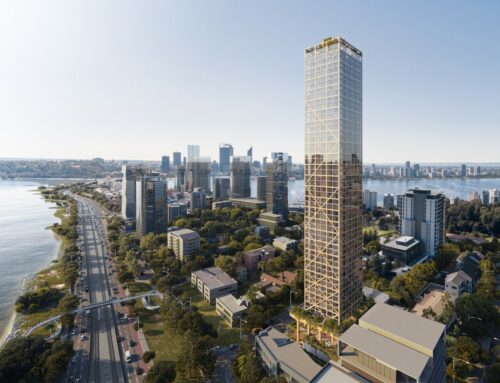Housing affordability and sustainability imperatives are fast tracking the development of innovative construction methodologies in high density residential building designs. One such innovation is the replacement of traditional concrete structures with lightweight Cross Laminated Timber (CLT).
CLT has a number of advantages over concrete; it is produced from sustainable wood supplies, has high flexibility and good resistance to seismic forces, and can be prefabricated offsite to drastically reduce on-site build times.
NDY, A Tetra Tech Company (NDY), is part of this lightweight revolution, providing ongoing design input and benchmark testing on new apartment complexes in Auckland. NDY Acoustics Manager Tim Beresford and the team have been carrying out airborne and impact insulation tests establishing the performance of various systems in relation to New Zealand and Australian Building Code requirements. These tests have been designed to optimise CLT constructions to provide the best value-for-money acoustic design solutions for a given apartment situation, whether it be a code-minimum budget housing development or a high-end luxury apartment building.
One common complaint from occupants of lightweight-floored apartments is that low-frequency sounds (thuds, thumps and booms) can be highly audible and annoying; an issue which is far less prevalent in concrete-floored apartments. Given that CLT floors fall into the ‘lightweight’ category, special design considerations need to be employed if good low-frequency performance is to be achieved. Unfortunately, most building codes do not mandate controls for the low-frequency performance, and therefore this issue is often overlooked during the design stage most projects.
NDY has been carrying out heavy impact (low-frequency) assessments of CLT and other apartment floor types to determine their relative resistance to thuds, thumps and booms; a technique entirely new to the Australian and New Zealand building industries.
The procedure for these tests utilises the ball drop methodology outlined in Japanese Industrial Standard A 1418-2. This procedure is better suited to determining a floor’s resistance to low-frequency impact transmission than the “standard” impact tests (using a tapping machine) as stipulated in the Australian and New Zealand Building Codes.
The data and analytics gathered by NDY is instrumental in developing lightweight CLT buildings which are cost effective, energy efficient and provide good impact and airborne sound insulation performance.




